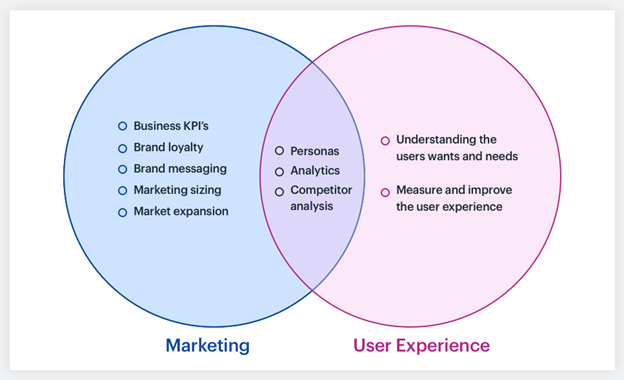Introduction:
In today’s digital landscape, where attention spans are fleeting and competition is fierce, the success of a digital marketing campaign hinges on more than just catchy slogans and flashy visuals. User Experience (UX) has emerged as a critical component in the realm of digital marketing, dictating how users interact with websites, apps, and other digital platforms. In this blog, we’ll delve into the significance of UX in digital marketing and explore how it can make or break the success of your online endeavors.
Understanding User Experience (UX):
Define what UX is and its significance in the digital realm. Explain how UX encompasses the overall experience a user has while interacting with a website, app, or any digital product. Highlight the elements that contribute to a positive UX, such as usability, accessibility, design, and functionality.
The Impact of UX on Digital Marketing:
Discuss how UX directly influences various aspects of digital marketing, including conversion rates, customer retention, brand loyalty, and overall user satisfaction. Provide examples of successful digital marketing campaigns that prioritize UX and have achieved notable results.

Enhancing Website UX for Better Marketing Performance:
Explore strategies and best practices for improving website UX to drive better marketing outcomes. This can include optimizing website speed, ensuring mobile responsiveness, simplifying navigation, and creating intuitive user interfaces. Emphasize the role of A/B testing and user feedback in refining website UX.
Leveraging UX in Social Media Marketing:
Examine the role of UX in social media marketing and how platforms like Facebook, Instagram, and Twitter prioritize user engagement and satisfaction. Discuss the importance of compelling visuals, interactive content, and seamless user journeys in capturing audience attention and driving conversions on social media.
The Role of UX in Email Marketing:
Explore how UX principles can be applied to email marketing campaigns to enhance user engagement and drive click-through rates. Discuss the importance of personalized content, responsive design, and clear call-to-action buttons in optimizing the UX of marketing emails.
UX and Search Engine Optimization (SEO):
Highlight the connection between UX and SEO and how Google’s algorithms prioritize user-centric websites in search rankings. Discuss the importance of mobile-friendliness, page speed, and high-quality content in improving both UX and SEO performance.
Measuring UX Success:
Introduce key metrics and tools for measuring the success of UX initiatives in digital marketing. Discuss the importance of analytics in tracking user behavior, identifying pain points, and making data-driven decisions to continually enhance the UX of digital properties.
Real-World Examples of UX in Digital Marketing:
Present case studies of brands or companies that have effectively leveraged UX principles to achieve success in their digital marketing efforts. Analyze what made these campaigns successful and extract actionable insights that other businesses can apply to their own strategies.
Conclusion:
Summarize the key points discussed in the blog and reinforce the importance of prioritizing UX in digital marketing initiatives. Emphasize that by focusing on delivering exceptional user experiences, businesses can not only attract and retain customers but also gain a competitive edge in the crowded digital landscape. In essence, this blog aims to underscore the pivotal role of UX in driving the success of digital marketing campaigns and provides actionable insights for businesses looking to elevate their online presence through superior user experiences.



